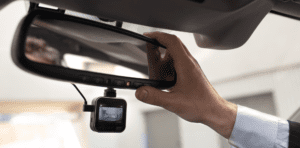Compare cheap car insurance
✔ Compare cheap car insurance quotes
✔ Over 110 insurance providers
✔ Get a quote in minutes
✔ Save up to £504*
When you insure your car, the purpose for which you use it can impact the cost of your insurance premium.
- What are Car Insurance Classes of Use?
- What are the Different Car Insurance Classes of Use?
- Why does Class of Use matter?
- What Happens if I Choose the Wrong Class of Use?
- How Can I Reduce the Cost of My Car Insurance Premium?
- Frequently asked questions
It’s important to understand the different classes of use in car insurance and their significance. This knowledge can help you make informed decisions about your car insurance policy.
What are Car Insurance Classes of Use?
What are Classes of Use?
Car insurance classes of use are categories that define how you plan to use your vehicle. When setting up a new car insurance policy, your insurer will ask which class of use you need. This classification is crucial as it influences your insurance premium.


Your car’s use may seem trivial, but it significantly affects your insurance costs. For example, a car used for daily chores like shopping or the school run is viewed differently from one used for work-related travel.
The key difference lies in the mileage and travel times. Frequent use during peak hours, like rush hour, increases the likelihood of accidents, thus raising the risk level in the eyes of insurers.
Why Does it Matter?
The reason behind this differentiation is straightforward. Insurers calculate premiums based on risk assessment. More miles on the road, especially during busy times, translate to a higher chance of being involved in an accident.
Consequently, policies for cars used extensively for commuting or business purposes often come with higher premiums compared to those used less frequently or for shorter trips.
Understanding these classes and accurately declaring your car’s use can ensure that you are appropriately covered and help avoid any complications in the event of a claim. Misrepresenting your car’s usage can lead to issues with claims, making it essential to choose the right class of use for your needs.
How much can you save on your car insurance?
What are the Different Car Insurance Classes of Use?
Understanding the classes of car insurance use is crucial to ensure you have the right cover for your needs. Here’s a detailed breakdown of the different types:


The SDP class is tailored for routine, everyday driving activities. This includes visiting friends, doing school runs, and shopping trips. Essentially, it’s for non-work-related travel in your car.
Expanding on the SDP, SDP+C includes all the aforementioned uses plus journeys to and from your workplace. Notably, it covers trips to the train station, where you might park your car to take the train to work.
However, it’s important to note that typically, this cover is limited to just one workplace. If your job involves travelling to multiple workplaces, you might need a more comprehensive cover.
Personal Business Use (SDPC + Business Use)
This category encompasses all the elements of SDP and SDP+C, adding on business-related travel. It’s subdivided into three classes:
- Class 1 Business: This is for those who need to travel to various locations for business purposes, such as on-site visits or multiple business meetings.
- Class 2 Business: Similar to Class 1, but this extends the cover to include another named driver, like a spouse, partner, or colleague, who also uses the car for business purposes.
- Class 3 Business: Often termed ‘commercial travelling‘, this is suitable for roles involving extensive travel, such as sales representatives. It may cover unlimited travel distances and destinations. However, it’s important to remember that it doesn’t cover the transportation of business goods or merchandise; commercial insurance is required for that.
Commercial Insurance
Commercial car insurance is essential for those who drive as a part of their job, like taxi drivers, chauffeurs, delivery drivers, or driving instructors.
![]()
![]()
Since the onset of the COVID-19 pandemic, there’s been a significant increase in home deliveries, amplifying the demand for delivery drivers for companies like Amazon, Deliveroo, and Just Eat.
However, when considering delivery driving to earn extra income, it’s vital to check your insurance policy. Many insurers view delivery driving as high-risk and may not provide cover.
Furthermore, without specific ‘hire and reward’ or courier cover, your standard car insurance could be invalidated, leaving you unprotected even for your regular SDP driving.
How much can you save on your car insurance?
Why does Class of Use matter?
Understanding why the class of use in car insurance matters is crucial for selecting the right cover and anticipating the costs. Here’s an in-depth look at why this classification plays a key role:


When an insurance provider calculates your car insurance premium, they focus on assessing the risk of you being involved in an accident. This risk assessment is based on various factors, including how, where, and why you use your car.
Commuting Risks: For instance, if your car usage includes commuting to work, you’re likely to be on the roads during peak hours. These are times when traffic congestion is at its highest, increasing your exposure to potential accidents. This is compared to someone who uses their car for non-commuting purposes, like leisurely drives or running errands, where the roads might be less crowded.
Business Travel Risks: Moreover, if your usage involves extensive travel for business, like driving on motorways to different offices, your risk exposure further escalates. The more miles you cover, especially on fast-paced routes like motorways, the higher the likelihood of encountering road incidents.
The fundamental principle in insurance is that higher risk leads to higher premiums. This is because the insurer’s liability increases with the likelihood of you making a claim.
Therefore, the business class of use in car insurance is often more expensive than personal use categories. The insurer perceives a greater risk due to the nature of business travel, which often involves more frequent and diverse road use compared to private driving.
Personal vs Business Insurance Costs
The distinction between personal and business use is significant in insurance calculations. While personal use, including commuting, might slightly increase your premium, business use can lead to a more substantial increase.
This is because business driving often encompasses varied locations, longer distances, and sometimes unconventional working hours, all contributing to a heightened risk profile.
Key Takeaway
The class of use in car insurance is a crucial factor that determines your risk level from the insurer’s perspective.
It directly influences the cost of your premium, with business use typically incurring higher costs due to the increased risk associated with such driving patterns.
Understanding this can help you choose the right cover and anticipate the associated costs effectively.
How much can you save on your car insurance?
What Happens if I Choose the Wrong Class of Use?
Selecting the correct class of use for your car insurance is crucial. It’s not just a box-ticking exercise; it has significant legal and financial implications. Let’s explore what could happen if the class of use doesn’t match your actual vehicle usage.


The Risks of Incorrect Class of Use
Driving Uninsured
If you’ve registered your car under the Social, Domestic, and Pleasure (SDP) class but use it for commuting or business purposes, you’re essentially driving uninsured. This mismatch means that your insurer may not cover you in the event of an accident. In the eyes of the law, this is equivalent to having no insurance at all.
Legal Consequences
Choosing the wrong class of use can lead to serious legal repercussions. If you’re caught, it might result in a criminal conviction. The consequences include hefty fines, penalty points on your licence, and in severe cases, disqualification from driving. Such a conviction can also significantly increase your future insurance premiums.
The Importance of Honesty in Insurance
Avoiding False Economy
While it might be tempting to select a cheaper class of use to reduce insurance costs, this is a false economy. If you need to make a claim and your insurer discovers that your class of use is incorrect, they can invalidate your policy.
This means you could be left to cover the cost of damages yourself, which can be financially crippling, especially in major accidents.
Long-Term Implications
Beyond the immediate financial risks, having your policy invalidated can have long-term effects. It can make obtaining insurance in the future more difficult and expensive. Insurers view policyholders with a history of invalidated policies as high-risk, leading to higher premiums.
Key Takeaway
Choosing the wrong class of use for your car insurance is a risky decision that can have serious legal and financial consequences. It’s vital to assess your car usage accurately and be honest with your insurer.
This honesty not only ensures that you’re legally covered but also helps maintain your financial security in the long run. Remember, insurance is there to protect you, but it can only do so if it’s based on truthful and accurate information.
How much can you save on your car insurance?
Reducing your car insurance premium can be achieved through several practical steps. By making informed choices about your car and insurance policy, you can enjoy savings while remaining fully compliant with legal requirements.


Selecting the Right Car
Insurance Groups
One of the easiest ways to cut down your insurance costs is by choosing a car in a lower insurance group. Cars are categorised into insurance groups based on factors like repair costs, performance, and safety features.
Generally, vehicles in lower groups are cheaper to insure. Opt for a car that balances your needs with lower insurance costs.
Tailoring Your Insurance Policy
Essential Add-Ons Only
When customising your insurance policy, be selective with add-ons. While extras like a courtesy car, motor legal protection, and windscreen cover can be beneficial, they can also increase the cost of your premium. Carefully consider which add-ons are essential for you and skip the rest to keep costs down.
Black Box Policies for New Drivers
For those who have recently passed their driving test, a black box policy can be a cost-effective option. This policy involves installing a device in your car that monitors your driving habits.
Safe driving can lead to discounts on your premium, making it a good incentive for new drivers to adopt responsible driving practices.
Shopping Around for the Best Deals
Comparing Car Insurance Quotes
Don’t settle for the first quote you receive. Shopping around and comparing car insurance quotes from different insurers can lead to significant savings.
Each insurance company has its criteria and offers, so you might find a better deal elsewhere. Ensure you’re comparing like-for-like cover to make an informed decision.
Additional Tips for Cheaper Car Insurance
- Higher Excess: Opting for a higher voluntary excess can lower your premium. However, ensure it’s an amount you can afford to pay in the event of a claim.
- No Claims Bonus: Build and protect your no-claims bonus. This discount can grow over the years and substantially reduce your insurance costs.
- Annual Payments: Paying for your insurance annually, rather than monthly, can often result in lower overall costs.
- Secure Parking: Having a secured parking space like a garage or a driveway can reduce the risk of theft or damage, leading to cheaper insurance.
Key Takeaway
In essence, reducing your car insurance premium involves a mix of choosing the right car, tailoring your insurance policy to your needs, and actively shopping around for the best deals. By taking these steps, you can enjoy more affordable insurance while ensuring you’re adequately covered.
How much can you save on your car insurance?
Frequently asked questions
When you’re getting a car insurance quote, one key question you’ll encounter is about the class of use of your car. This inquiry is essential as it helps in tailoring the insurance quotes to match your specific needs and circumstances.
Understanding how you use your car – whether it’s for personal errands, commuting to work, or business purposes – allows insurance providers to accurately assess the level of risk and offer you the most suitable cover options.
Remember, providing accurate information about your car’s class of use is crucial for valid and effective insurance cover.
If you’re planning to use your car for deliveries, it’s important to know that this activity requires a specific type of commercial car or van insurance. This should include ‘hire and reward’ cover, which is designed for vehicles used to transport goods or passengers in exchange for payment.
Your existing car insurance, particularly if it’s for Social, Domestic, and Pleasure (SDP) use, typically won’t cover delivery activities. However, some insurance providers might offer the option to extend your existing SDP cover to include hire and reward.
If this isn’t possible with your current insurer, you’ll need to consider either upgrading to a commercial policy with them or finding a new provider that can offer a policy covering both your personal driving and delivery work.
It’s crucial to have the right insurance when making deliveries to ensure you’re legally covered and protected in case of any incidents on the road.
When it comes to using your car for commuting to work, you’ll need a specific type of insurance cover known as SDP+C (Social, Domestic, Pleasure + Commuting). This cover is designed to include your regular travel to and from your place of work.
The term ‘commuting’ is usually defined by insurance providers as travelling to and from the same workplace every day or following the same route regularly, like driving to a train station and parking there daily.
However, if your work commute varies, such as travelling to different locations for your job, it’s important to inform your insurance provider. In such cases, you might require additional cover to ensure you’re fully insured for your varied work travel.
Always check with your insurance provider to clarify your cover, especially if your commuting patterns don’t fit the standard definition. This ensures you’re correctly insured for your specific needs.
If there’s a change in how you use your car, it’s important to update the class of use on your car insurance policy. To do this, you should get in touch with your insurance provider as soon as possible.
They will reassess your insurance needs based on the new class of use and adjust your premium accordingly.
Being honest and transparent about your car’s usage with your insurance company is crucial. It may result in a slight increase in your premium, but it ensures that you have the right cover in place.
This is far safer than the risk of being underinsured or not insured at all for your actual vehicle usage.










